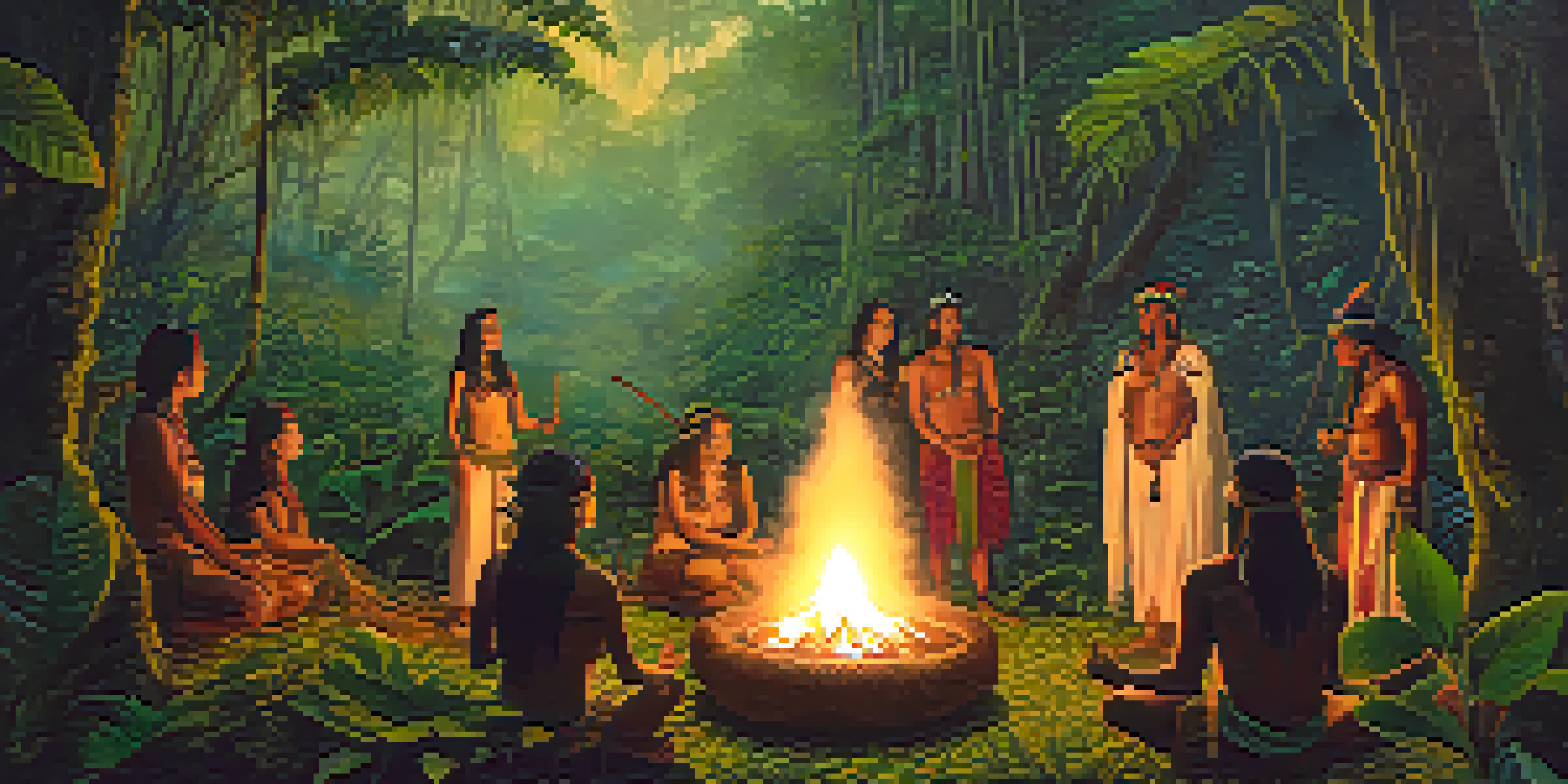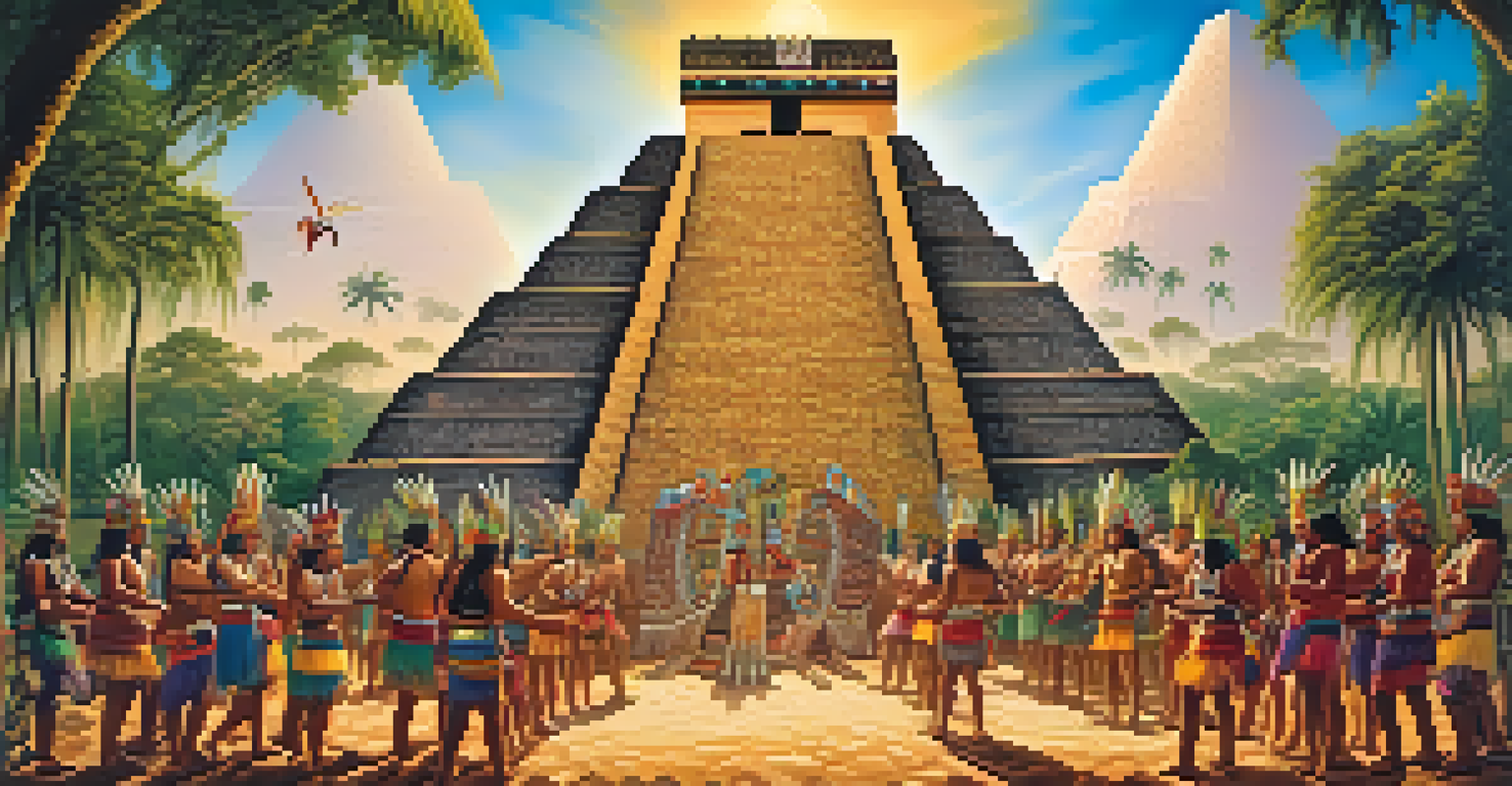Entheogens in Ancient Civilizations: A Cultural Lens

Understanding Entheogens: A Brief Introduction
Entheogens are substances that induce altered states of consciousness, often used in spiritual or religious contexts. These natural compounds, such as psilocybin mushrooms and peyote, have been integral to various ancient civilizations. By exploring their use, we can better understand the spiritual practices and worldviews of these cultures.
The experience of altered states of consciousness is a deeply human pursuit, revealing the interconnectedness of life and the universe.
In many cases, entheogens served as a bridge between the physical and spiritual realms, allowing users to access deeper insights and connect with the divine. Their significance in rituals and ceremonies highlights the profound relationship between humans and nature. This connection is not just historical; it speaks to a universal quest for meaning and understanding.
As we embark on this journey through time, we will uncover how different ancient cultures embraced these substances, using them to shape their beliefs, traditions, and social structures. Each civilization's unique approach to entheogens offers a glimpse into their values and priorities, enriching our understanding of human experience.
Entheogens in Mesoamerican Cultures
Mesoamerican civilizations, particularly the Aztecs and Mayans, held entheogens in high esteem, often integrating them into religious rituals. Peyote and psilocybin mushrooms were commonly used to facilitate communion with the gods, offering insights into existence and the cosmos. These practices were not merely recreational; they were pivotal to understanding life's mysteries.

Ceremonies involving entheogens often included elaborate rituals, music, and dance, creating a communal experience that fostered connection among participants. The vision quests facilitated by these substances helped guide individuals on their personal and spiritual journeys. This shared experience forged strong bonds within the community and reinforced cultural identity.
Entheogens Bridge Spiritual Realms
Entheogens have historically facilitated communion with the divine, offering insights into existence and fostering a deep connection between humans and nature.
The legacy of these practices continues to influence contemporary spiritual movements. Modern interest in these ancient rituals reflects a growing recognition of the potential benefits of entheogenic substances for personal growth and healing. By revisiting these traditions, we can glean valuable insights into the human experience and our relationship with nature.
The Role of Ayahuasca in Amazonian Tribes
In the Amazon rainforest, various indigenous tribes have utilized ayahuasca, a powerful entheogen made from the Banisteriopsis caapi vine and other plants, for centuries. This brew is central to their spiritual practices, often consumed during rituals to promote healing and gain insights. The experience is typically led by a shaman, who guides participants through their journey.
Psychedelics are a means to experience the world beyond the confines of our ego and to glimpse the divine.
Ayahuasca ceremonies are deeply communal events, emphasizing connection to nature, ancestors, and the spiritual world. Participants often report profound experiences that lead to personal transformation and healing. This highlights the importance of community and shared experience in indigenous cultures, demonstrating how entheogens can foster unity and understanding.
The growing popularity of ayahuasca in Western societies speaks to a broader interest in alternative healing methods and spirituality. However, it's crucial to approach these practices with respect for their cultural origins. Understanding the context and significance of ayahuasca in Amazonian tribes enriches our appreciation for this ancient wisdom.
Ancient Greek Mysteries: The Eleusinian Mysteries
The Eleusinian Mysteries, celebrated in ancient Greece, were secretive rites held in honor of Demeter and Persephone. Participants believed that these rituals provided insights into life, death, and rebirth, with entheogenic substances playing a likely role. Although the exact methods remain shrouded in mystery, it's suggested that a drink called kykeon was consumed during the ceremonies.
These rites were pivotal for ancient Greeks, offering a sense of belonging and a deeper understanding of existence. The transformative experiences reported by initiates often led to a renewed perspective on life and death. This illustrates how entheogens were intricately tied to philosophical and spiritual inquiries of the time.
Cultural Legacy of Ancient Practices
Various ancient civilizations, from Mesoamerican tribes to Greek mysteries, utilized entheogens in rituals that shaped their beliefs, traditions, and social structures.
The influence of the Eleusinian Mysteries can still be felt today, as they laid the groundwork for many philosophical ideas about consciousness and the afterlife. The legacy of these ancient practices invites us to explore our relationship with the unknown, encouraging a quest for meaning that transcends time and culture.
Entheogens in Ancient Asian Practices
In ancient Asia, entheogens were often incorporated into spiritual practices, particularly in Hindu and Buddhist traditions. Substances like soma, mentioned in the Vedas, were believed to provide divine insights and enlightenment. The use of these substances highlights the intersection of spirituality and nature in these cultures, emphasizing their quest for higher consciousness.
Meditative practices in Buddhism also embraced the use of certain plants and substances to enhance spiritual experiences. The goal was not merely to escape reality but to gain a deeper understanding of one's true nature and the universe. This interplay between entheogens and meditation illustrates a holistic approach to spiritual growth.
The continued relevance of these ancient practices in modern spirituality emphasizes the timeless pursuit of enlightenment. As individuals seek deeper connections to themselves and the world around them, the teachings from these ancient cultures offer valuable guidance. This reinforces the idea that the exploration of consciousness is a shared human experience, transcending cultural boundaries.
The Influence of Entheogens on Art and Literature
Throughout history, entheogens have inspired countless artists and writers, influencing their creative expressions. The altered states of consciousness induced by these substances often lead to unique perspectives, allowing for profound artistic exploration. For many, these experiences serve as a wellspring of inspiration, shaping works that resonate with deeper truths.
In ancient civilizations, artworks and writings frequently depicted themes of spirituality, nature, and the divine, often reflecting the experiences of entheogen users. This artistic legacy continues to inspire contemporary creators, who seek to capture the essence of consciousness and existence. By examining these connections, we can appreciate the role of entheogens in shaping cultural narratives.
Modern Revival and Therapeutic Insights
The resurgence of interest in entheogenic practices today is supported by scientific research highlighting their potential benefits for mental health and personal growth.
As we navigate the modern landscape of art and literature, the influence of entheogens remains evident. Many contemporary artists draw upon these experiences to explore themes of identity, transformation, and the human condition. This ongoing dialogue between entheogens and creativity reminds us of the power of altered states to unlock new realms of imagination.
Modern Perspectives: The Revival of Entheogenic Practices
In recent years, there has been a resurgence of interest in entheogenic practices, with a growing number of people exploring their potential benefits. This revival reflects a broader societal shift towards spirituality, healing, and self-discovery. Many individuals are seeking alternative approaches to well-being that resonate with ancient traditions.
Scientific studies are also beginning to uncover the therapeutic potential of entheogens, particularly in mental health treatment. Research on substances like psilocybin and MDMA has shown promising results in alleviating conditions such as depression and PTSD. This modern exploration not only validates ancient practices but also paves the way for new understanding and acceptance.

However, it's essential to approach this revival with respect and mindfulness. As we re-engage with these ancient traditions, we must honor their cultural contexts and the wisdom they offer. By fostering a respectful dialogue between past and present, we can create a more inclusive understanding of entheogens and their role in human experience.